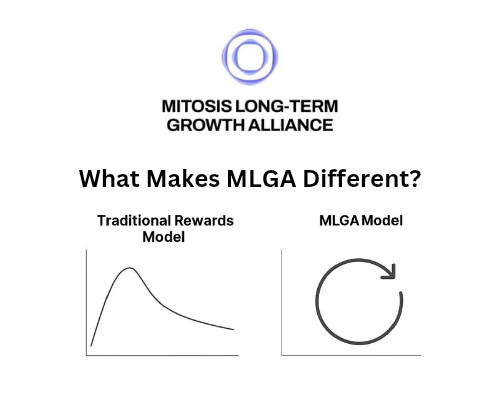The Stablecoin Game: Why Distribution Is King and Investors Must Beware

In the wild west of cryptocurrency, stablecoins—digital currencies pegged to traditional assets like the U.S. dollar—have become a cornerstone of the digital economy. They offer a bridge between the volatility of crypto assets and the stability of fiat money, allowing 24/7 transactions across borders. But as Arthur Hayes, crypto veteran and co-founder of BitMEX and Maelstrom, argues, the stablecoin market isn’t just about technology or trust—it’s about distribution. Without effective distribution channels, even the most innovative stablecoin is dead on arrival.
The Stablecoin Story: Why Distribution Matters Most
Stablecoins like Tether (USDT), Circle’s USDC, and Ethena’s USDe have played a key role in crypto adoption by digitizing the dollar. These assets function like synthetic bank accounts on the blockchain, moving value instantly and cheaply across decentralized networks. Yet, for all their benefits, Hayes argues that their success has little to do with technical superiority or regulatory clarity. The true foundation of stablecoin dominance lies in one word: distribution.
A stablecoin must reach users easily and efficiently. That means integrations with exchanges, wallets, trading platforms, and even social media. Without those connections, a stablecoin—even one with impeccable backing—won’t get traction. Hayes points to Tether as the prime example of how distribution—not branding or legality—drives adoption.
He traces the stablecoin’s roots to the mid-2010s, in Greater China, where crypto traders were facing mounting pressure from banks. As fiat access became unreliable, Tether, launched in 2015 on Bitfinex, offered a compelling alternative: a digital dollar that sidestepped banking intermediaries. Bitfinex’s credibility and deep roots in the Chinese-speaking crypto world gave USDT a head start.
It wasn’t just about timing or utility. Tether worked because it solved a very specific and growing problem—Chinese and Hong Kong-based traders needed dollar exposure but were constrained by capital controls and local banking friction. Jean-Louis van der Velde, Tether’s CEO, had the right experience and network to tap into this demand. By the time the ICO boom hit in 2017, Tether had already captured massive mindshare and usage. Its role as the go-to “dollar account” for altcoin trading was locked in.
Since then, USDT has grown into a behemoth. In countries like Nigeria, Tether now facilitates volumes equivalent to a third of the nation’s GDP. Across the Global South, Tether has become the default dollar replacement—not because of slick marketing or a Silicon Valley pedigree, but because it works and is already everywhere.
Circle’s Struggle: An American Brand in a Global Game
If Tether’s rise was powered by timing and trust in Asia, Circle’s journey is one of missed opportunities and geographic misalignment. Despite being the second-largest stablecoin issuer, Circle faces what Hayes describes as a fatal flaw: it’s a U.S. company trying to win a game that’s largely being played elsewhere.
Circle’s USDC has always positioned itself as the “regulated” stablecoin, backed by U.S. assets and overseen by U.S. institutions. The company pushes a quiet narrative that American equals safe, while others (especially Tether) carry more risk. But as Hayes points out, this message doesn’t resonate in the core markets where stablecoins are most in demand—Asia, Africa, Latin America. Tether is already embedded in those ecosystems, and the fact that USDT doesn’t have Chinese leadership hasn’t mattered to the millions using it every day.
Circle’s reliance on Coinbase only deepens its dependency. In a revealing move, Circle gives 50% of its interest income to Coinbase in exchange for access to its user base and platform. Hayes sees this as Circle’s CEO, Jeremy Allaire, having no choice but to play second fiddle to Brian Armstrong, Coinbase’s chief.
Even Circle’s IPO plans raise eyebrows. Hayes questions the company’s valuation—39% of Coinbase’s market cap—and criticizes its scattered portfolio of non-core businesses. He also doubts whether a company so heavily tied to a single distribution partner can maintain long-term independence. Still, he cautions that Circle is not the shorting opportunity some investors might think. The bubble isn’t bursting just yet—in fact, it’s still inflating.
Profits, Promises, and the Brewing Bubble
What’s inflating the stablecoin market? Simple economics. Issuers earn through net interest margin (NIM)—the difference between what they earn on the reserves backing their coins (typically U.S. Treasuries) and what they pay out to users (often zero). Tether, which pays no interest to USDT holders, has quietly become one of the most profitable financial firms per employee on the planet.
When the Federal Reserve raised rates in 2023, stablecoin issuers started printing money. Billions in interest flowed in, while users continued to treat USDT and USDC like digital cash. That level of profitability is seductive—both to existing players and to new entrants looking to break in.
But here’s the trap. Getting into the stablecoin business today is almost impossible without pre-established distribution. The big exchanges demand equity or revenue-sharing in return for listing new coins. Social media platforms like Meta and X are planning their own stablecoins and won't outsource to startups. Banks, meanwhile, are bogged down by regulation and unlikely to partner with new projects.
That leaves new issuers one option: pay high yields to lure users. This cuts into margins and increases the risk of collapse when interest rates fall or demand dries up. Hayes believes many of these projects are doomed to fail—especially in the inevitable bear market. The speculative fever will leave behind wreckage, and most investors won’t see it coming.
Banks on Life Support
Stablecoins aren’t just a crypto phenomenon—they represent an existential threat to the banking system. Hayes recounts a conversation with a board member of a major international bank who candidly admitted, “Our industry’s on life support.” The problem? Stablecoins do the same job—faster, cheaper, and without the middlemen.
While JPMorgan employs hundreds of thousands of people, Tether runs its global operation with just over 100 staff. Despite multiple government crackdowns, USDT remains dominant in Nigeria. In Argentina, local ski guides ask for payment in USDT to avoid inflation and absurd ATM fees. These aren’t hypothetical use cases—they’re everyday realities in countries where the banking system has failed.
Regulation keeps traditional banks tied to expensive and outdated systems. Hayes gives an example from BitMEX: opening a Tokyo office required hiring 60 full-time employees at $4.8 million per year, simply to comply with local laws. A fraction of that cost could’ve been handled by software, but regulation made it impossible.
Meanwhile, tech companies are re-entering the stablecoin race. Facebook’s Libra was killed by regulators, but Meta hasn’t abandoned the dream. Other platforms like Google, Airbnb, and X (formerly Twitter) are exploring stablecoin integrations to bypass banks altogether. Hayes sees these platforms as sleeping giants. Once they move, they could outcompete startups and banks alike.
Tether’s Winning Formula
Tether’s dominance isn’t an accident—it’s a case study in execution. Early access to Bitfinex gave it built-in distribution. Solving a key pain point in Greater China gave it legitimacy. The 2017 ICO boom locked it into the crypto economy as the base trading pair for altcoins. By the time regulators and competitors caught on, USDT had already won.
New players can’t copy this path. Binance tried with BUSD and failed. Exchanges now extract steep tolls from stablecoin startups, and the window to gain traction is almost closed. Ethena’s success with USDe—reaching a $6 billion market cap by early 2025—was an outlier. Hayes had the advantage of experience, capital, and insider access. Most others won’t be so lucky.
Dance While the Music Plays
Despite the risks, Hayes isn’t bearish on stablecoins—yet. He believes the bubble has room to run, driven by speculative mania, favorable regulatory trends, and political tailwinds. A second Trump administration, for example, could shake up banking oversight and clear the path for more aggressive fintech plays.
But investors shouldn’t be lulled into thinking these projects are safe long-term bets. Hayes compares the current landscape to musical chairs. When the music stops, most will be left standing. The winners will be those who understood distribution, scaled early, and kept a tight grip on user networks. Everyone else will burn out.
The message is clear: treat stablecoins as tactical opportunities, not long-term investments. Arbitrage, trade, speculate—but know when to exit. Quoting former Citigroup CEO Chuck Prince, Hayes reminds us, “As long as the music's playing, you’ve got to dance.”
Conclusion
Stablecoins are transforming global finance—from rural Argentina to the heart of Africa. But their success is not just about stability or transparency. It’s about distribution, scale, and timing. Tether
Learn with mitosis







Comments ()